One of the most effective solutions to fuel poverty lie in energy efficiency improvements to the home. This includes ensuring that the fabric of the dwelling is insulated to as high a standard as possible, and to ensure that the heating provision is efficient and economic.
Some dwellings will only need simple, common-sense measures to make a difference and in such cases, basic energy advice may be all that is needed. Other dwellings may need more substantial work to help make them to become energy efficient.
Where can I get advice on what is available?
Contact the Local Authority to get up do date advice on the latest offers available for energy efficiency measures, advice, and possible financial assistance.
The referral section will direct you to the relevant local authority section or organisations who may be able to assist.
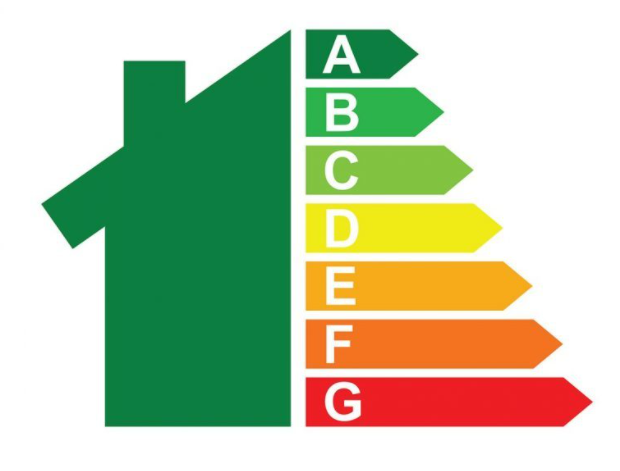
Energy Efficiency in the home
Making the home more energy efficient is one of the easiest ways of saving money, keeping the home warm and reducing draughts. Keeping the house warm can also have significant improvements on people’s physical and mental health; improve children’s education attainment and helps with the general wellbeing of those living in the house.
Benefits of making the home more energy efficient –
- Saves money.
- Makes the home more comfortable.
- Improving the resale value.
- Reduces environmental harm.
Improving energy efficiency is the best long-term solution to tackling fuel poverty
Loss of heat through the home
Making the home more energy efficient can be one way of ensuring that people are not having to spend as much on gas and electricity to keep the house warm. Up to 60% of loss is through external walls and the roof. Insulating the walls and loft area can be a cheap and cost effective methods to reduce the loss.
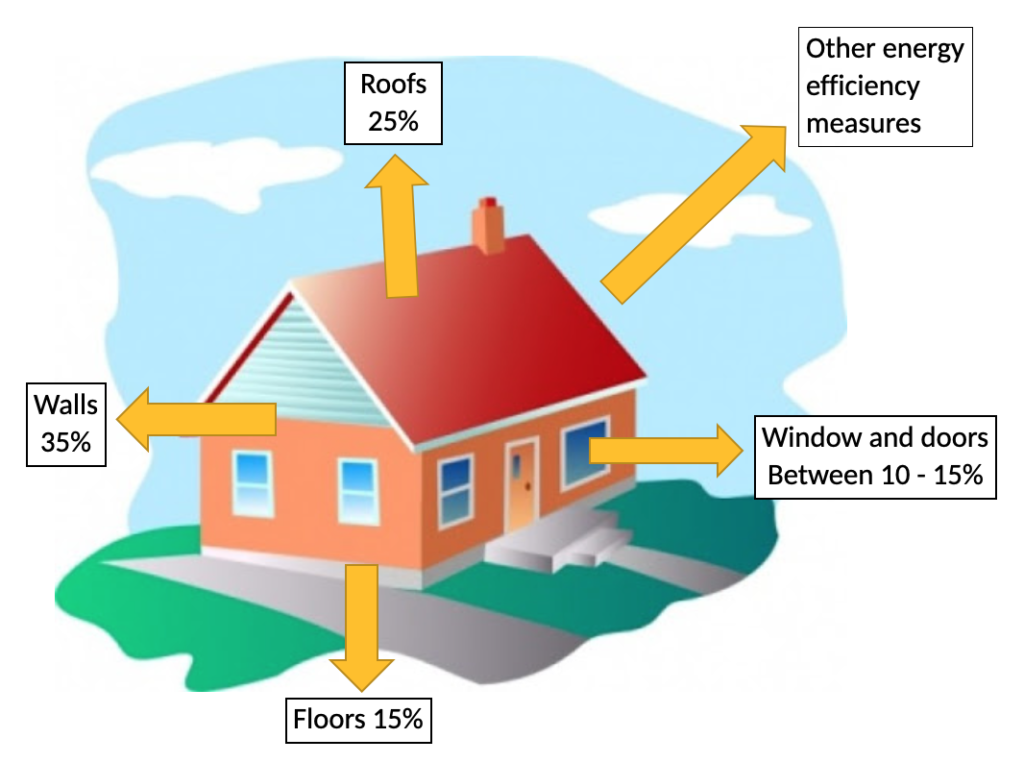
Roofs and loft spaces
Loft Insulation
Approximately 25% of heat loss in the home is through the roof. Loft Insulation will help to reduce this loss.
Insulation between the joists keeps warmth in living spaces below and creates a cold loft, while insulation in the rafters allows the warmth to stay in the roof space as well. Other benefits of roof insulation include: Lower heating bills and a reduction in noise coming from outside, especially to the upper levels of your home. Loft Insulation helps to improving your home’s energy efficiency rating.

Insulating a loft can help the property to keep heat in; making it feel warmer and more comfortable and can help the householder save up to £150 per year. A loft top up could also save you up to £65 a year.
Loft Insulation gives immediate cost-savings and significant long-term financial benefits
Room in roof Insulation
Because heat rises, it is important that if there is a room in the roof, the top of the house is well insulated. Older properties with rooms in the roof have little or no insulation, making this space the coldest in the house. As a consequence much of the heating is lost through the roof space.
Insulating the ceilings and wall of any room in roofs can be a cheap and cost effective method of keeping the heat within the roof space and therefore saving money in the long run.
Insulating lofts, attics or flat roofs is an effective way to reduce heat loss and reduce heating bills.
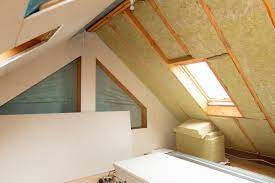
Benefits of roof and loft insulation
- significant savings on your energy bills
- easy and quick to install
- keeps the heat in the home
Walls
Approximately 35% of heat loss in the home is through the wall. The more external walls a property has, the more the increase in the level of heat loss.
The percent of heat loss will be slightly differ depending on the build of the property. Properties may be built of brick, stone or other materials. They may have a cavity or be Solid. All uninsulated properties will lose heat.
Insulating the wall will –
- Help to keep the heat in
- Can help reduces energy bills
- reduces the carbon footprint

Approximately, 35% of heat loss is through the wall
Types of wall insulation
Cavity Wall Insulation
If the property has a cavity between the Internal and external walls, then it may be possible to install Cavity Wall insulation between the cavities. Installing cavity wall insulation is often one of the most cost-effective measures that can be undertaken to save energy in the home.
Insulating cavity walls can help a home to keep heat in; making it feel warmer and more comfortable plus there can be savings of between £90 to £270 per year depending on the property type and size.
The material used in the cavity can include Blown Mineral Fibre, Polystyrene beads or Urea Formaldehyde Foam (Cavity wall should only be installed if the property is suitable and has no maintenance issues. The surveyor should be able to determine the suitability)
External and Internal Wall Insulation
Some homes built before 1920, have external walls that are solid rather than cavity walls. Without a gap, they will let more heat escape. Solid walls can be insulated – either from the inside or the outside. The cost of insulating these properties can be more expensive than a standard cavity wall but it can have a great impact on keeping the heat in and help to reduce energy bills.
A home will feel warmer and can there can be savings of up to £270 per year
If a householder is having problems with there Cavity Wall insulation, click on the link below for advise – Energy advice | Blackburn with Darwen Borough Council
Floors
Approximately 15% of heat is lost from houses, which have floorboards. Older homes are most likely to have suspended timber floors.
A home with an uninsulated suspended timber floor is draughty, loses heat and is more likely to be damp.
Insulating a floor by using insulating material beneath the floorboards, thereby can help to reduce the heat escaping through the floor into the ground.

Some of homes, especially new builds– will have a ground floor made of solid concrete. This can be insulated if the floor is being replaced, or can have rigid insulation laid on top.
Benefits
• save around £40 a year
• reduce draughts
• make your home warmer
Doors and Windows
Approximately, 10 to 15% of heat loss is through windows and doors. Old wooden and double glazed doors and windows can allow draughts to come in and heat to escape. The glazing on older windows can also be less effective in keeping the heat in.
Although expensive, changing old doors and windows to more energy efficient hardwood or PVC units will help to reduce energy bills and keep the house warmer. Energy efficient glazing should be either double or triple glazing. Before choosing a window or door, it is important for the resident to find out about the energy efficient rating of the unit. Doors and windows rated at ‘A’ are classed as the most energy efficient.
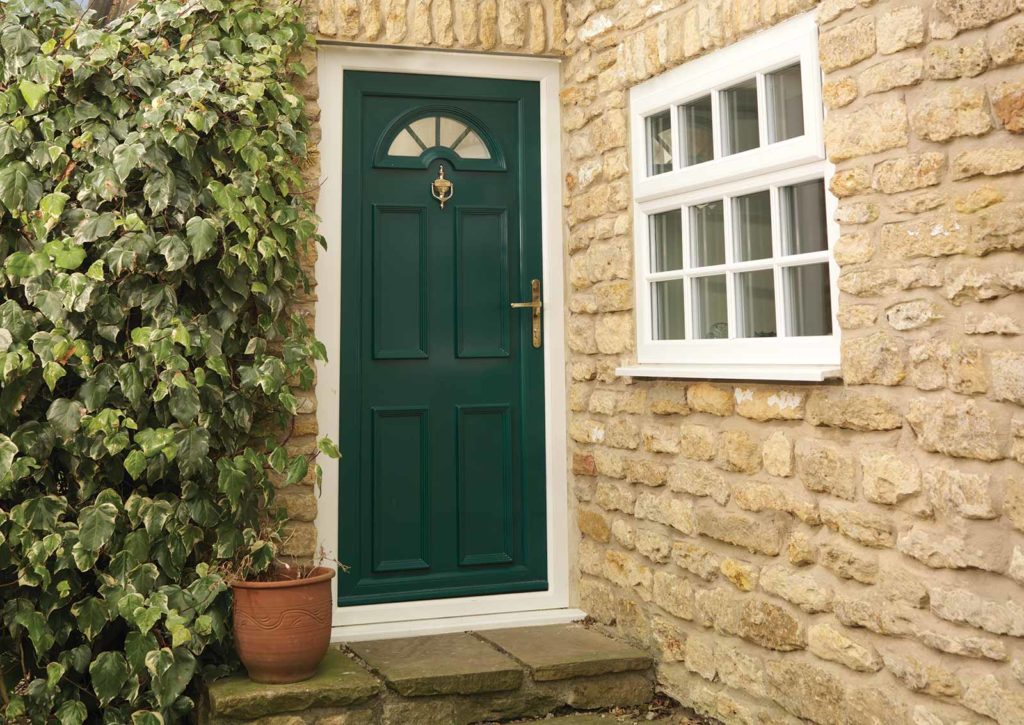
Having curtains which are lined with a layer of heavy material can help reduce heat loss from a room through the window at night and cut draughts.
Benefits –
• Reduction in the amount of heat lost
• Helps to lower energy bills
• keeps the house warmer
Other Energy Efficiency measures
Heating and Hot Water Systems
Boiler replacement

Over half of the money that is spent on fuel bills is for heating and hot water. Replacing an old inefficient boilers to and ‘A’ rated Energy efficient condensing boiler can help save money and reduce gas bills. Boilers over time become less and less efficient, using more energy to heat less water. Buying a new boiler on average can cost anything from £600 – £2500 depending on the householders requirements.
Gas Central Heating

The most common form of heating in homes is a central heating system. Most systems are run through mains gas with a small amount on electric, oil, LPG (tank gas), coal or wood.
A central Heating Systems can be made more energy efficient by –
- Replacing the boiler – to a newer more efficient model
- Changing or altering controls (See next section)
TRV – Thermostatic Radiator Valves

If a central heating system does not have a TRV already fitted, having one installed on all living space areas can help save money. TRV’s are relatively cheap to buy and have installed. TRV’s allow a householder to control the temperature of the radiators in each of the rooms. Once the radiator reaches the desired temperature the valve closes to stop overheating of the room, reducing the energy consumption. Thermostatic radiator valves also allow a householder to heat individual rooms at varied temperatures, so that it is possible to heat frequently used rooms more than others.
Householders can Save approximately £55 and a year by turning the room thermostat down by one degree
Room Thermostat and smart heating controls
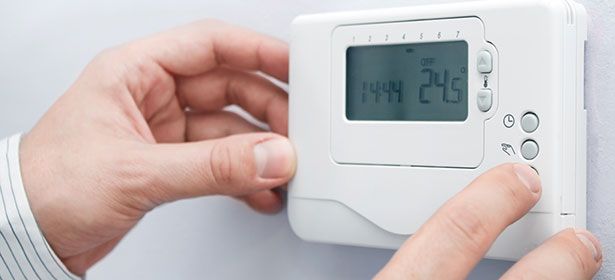
Room thermostats allow a householder to control the temperature from the central heating system. The room thermostat will turn the heating on until the room reaches the temperature that has been set, and then off until the temperature drops. It helps to stops the property from overheating or getting to cold. The thermoset will help the householder to save money by only switching the heating on when it is required. Most thermostats will also allow the householder to programme days and times of when the heating needs to come on.
Smart Heating controls allows the householder to manage the heating controls remotely from a computer, tablet or smartphone.
Benefits of heating controls –
• control the temperature of heating
• keep with keeping the home warm
• save money on energy bills
Electric Heating
Homes where there is no gas connections or a mains gas supply is not possible will have electric storage heaters for heating and a hot water cylinder heated by an immersion heater to give hot water. As electricity is one of the most expensive fuels per unit in the UK, running the heating can be costly.
Storage heaters are designed to work with dual rate and other storage heating specific electricity tariffs. These tariffs allow the householder to charge the heaters during the energy supplier’s cheaper, off-peak period, storing the heat for when it is required.
Replacing the electric heating system with a Gas central heating system can save a householder money. A resident can apply for a gas connection if they do not have one. (it’s not possible to get a connection in all areas)
Where it is not possible to get gas a householder may be able to change the storage heaters to a more efficient rated heaters.
Over half of the money that is spent on fuel bills is for heating and hot water
Generally Gas is Cheaper than Electricity
Draught Proofing
Draught proofing and blocking any gaps that are allowing cold air to come in a house is one of the cheapest methods of saving money and keeping the house warm. This includes draught proofing around windows, doors,
letterboxes, open chimneys and loft hatches can have a significant impact in helping to keep the warmth in. As well as draught proofing, it is important to stop any cold air coming in through holes or cracks on walls, around
windows and doors and from under floorboards and skirting boards. Using products such as fillers, silicone and cement can help to reduce cold air coming into the property.
Draught-proofing around windows and doors could save you around £25 a year*.
Draught Proofing an open chimney, when not in use could save around £18 a year*.
* Savings based on a typical gas-fuelled semi-detached property in England, Scotland or Wales.
(*Figures as per energy saving Trust website)
Lighting
Energy-efficient lighting can help in lowering electricity bills. Energy saving light bulbs use less electricity to emit the same amount of light as a traditional bulb. Replacing traditional incandescent lightbulbs with Halogen incandescent, compact fluorescent lamps (CFLs), or light emitting diodes (LEDs) will save money as well as reduce carbon emissions.
In most cases the most efficient lightbulbs are LED’s.
Energy efficient lightbulbs typically use about 25%-80% less energy than traditional incandescent lightbulbs, saving you money
Can last 3-25 times longer.
Reflector Panels for radiators
Silver foil or a reflector panels placed down the back of a radiator that is on an external wall will reflect heat back into a room rather than letting it escape through the walls of a house. Radiator reflector panels are relatively cheap to buy and easy to install.
Insulating hot water tanks and pipes
A hot water cylinder jacket will help keep the water in the tank hotter for longer, saving money. Cylinder Jackets on average cost around £15 but can save a householder around £18 a year. Insulating pipe using a foam tube that covers the exposed pipes between a hot water cylinder and boiler, reduces the amount of heat lost and, therefore, keeps the water hotter for longer and again saves the householder money.
Smart Meters
Smart meters can help a resident save money in their home. These meters can be fitted for both gas and electricity. A smart meters will save the resident money if they to monitor their usage and adjust their power consumption behaviour accordingly. Smart meters offer a number of benefits over traditional meters. These include automatic meter readings, no more estimated bills and in-home display showing usage in pounds and pence. Smart meters are supplied and fitted free of charge by the utility supplier.
Energy Efficient Appliances
When changing electrical appliances in the home always look at the energy efficiency labels on the product. Buying products that are ‘A’ rated can help save money in the long run.
To Save money avoid leaving appliances such as TV’s on standby. The average UK household spends £35 a year powering appliances left on standby. Power down’s can help to switch of item that have been left on standby. They are relatively cheap to buy and will help to save money.
Renewables
Renewable technologies use natural energy to make electricity. Fuel sources include wind, wave, hydro, biomass and solar. Renewable technology to provide heating and hot water will eventually replace the standard fossil fuel run systems such as gas central heating. Although in the short term these forms of technologies are expansive to install, in the long run they can save the householder money. Renewable technology includes Ground Source Heat Pumps, Air source heat pumps, Solar Thermal and Solar Panels.

Air source heat pumps
Air source heat pumps work by transferring heat absorbed from the outside air and transporting the heat into the indoor space. The air source works both in cold and warm weather and is able to provide both heating and hot water in the home. They can extract heat when air temperatures are as low as -15°C.
Air source heat pumps use electricity to run, but because they are extracting renewable heat from the air, the heat output is greater than the electricity input. This makes them an energy efficient method of heating a home.
Air source heat pumps are not cheap to install. On average, an air source heat pump installation will cost you around £6000 – £8000 depending on the size and type of property and on the pump brand and its heat output.
Ground Source Heat Pumps
Ground source heat pumps uses pipes that are buried deep in the garden to extract heat from the ground. These heat pumps are only possible if the house has a large garden space outside. The heat that they extract can be used to both heat the home and provide hot water.
On average, a ground source heat pump installation can cost £10,000 – £18,000 depending on the amount of heat required and amount of pipes that need to be put underneath the ground. Despite the greater upfront cost of installing a ground source heat pump, this type of pump is more efficient when it comes to heating a home. This results in higher fuel savings and lower energy bills.
Solar Thermal
Solar water heating systems use solar panels, fitted to the roof to collect heat from the sun to provide the home with hot water. A conventional boiler or immersion heater can be used to make the water hotter, or to provide hot water when solar energy is unavailable.
The system can provide hot water can provide hot water throughout the year and reduce the householder’s energy bills. Solar water heating system costs on average £3,000 to £5,000 depending on the type of system that is chosen.
Solar Panels
A solar panel, or photovoltaic module uses
solar panels to collect sunlight as a source of energy to generate electricity. The panels will only work when there is sunlight. The electricity can be collected in batteries to power appliances and lighting in the home. The panels are usually fitted on the roof of a property. The amount of electricity produced will depend on the amount of panels fitted.
Solar panels for the average household in the UK cost £5,940, according to the latest government data. A family of three typically needs a 3.6 to 4kW solar PV system, which usually consists of 12 or 13 panels, and requires around 20m² of roof space
The advantages of solar panels are that they produce free renewable energy. However, when considering installing solar panels, the payback period to the cost of the panels should be taken into consideration.
Check out our range of Fuel Poverty resources designed to help you save money all year round.
